How to rack the garden hose
We have bought a garden hose, so we can more easily water our plants in the garden and in our greenhouse. So it can reach the greenhouse, we had to buy a 30 meter long hose and because I'm cheap, I bought just a hose without a rack or any other system to keep the hose in control.
Due to this, the 30m hose was always somewhere in our porch, and even though I was OK with it, my wife wasn't. She bought a very simple rack for the hose which could be installed in the wall. However, the wall material is such I would prefer not to attach anything in it with screws, so I decided to use a bit of board and attach it in it.
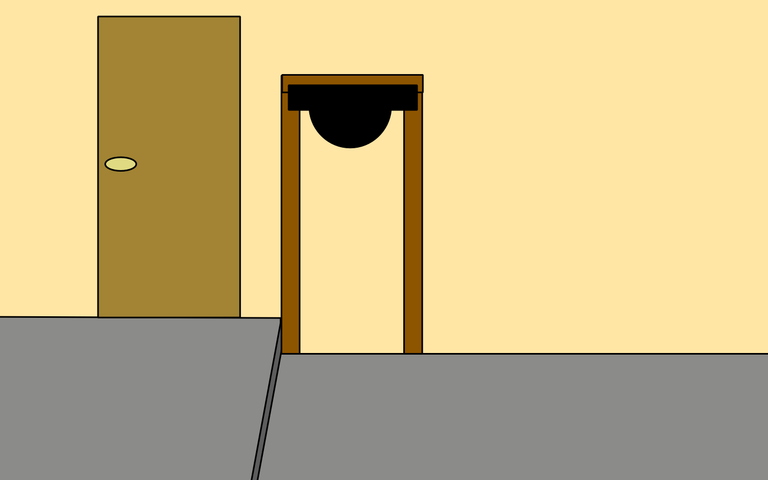
Here above you see the design at it's simplest. Two "legs" and a horizontal plank between them, in which the rack was to be installed. Like this it could stand by itself without any problems, just leaning at the wall.
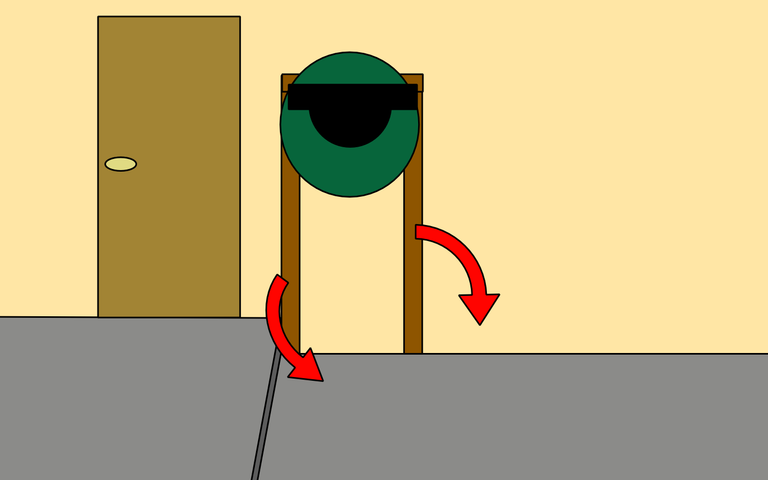
However. If I'd add the 30 meters of hose in it, the weight would cause it to fall over. In the above picture I tried to make some arrows with my trial affinity designer, but now as I look at it, I can see it's not really perfect... but it helps.
The issue could be that with the green hose loaded, it could fall forwards. If any kind of force (wind, a child bumping the rack, etc.) would be applied to the hose rack, it could fall to the side.
The center of gravity in my construction would be so high, it'd fall over even with a slight force. As mentioned, it would be OK without the hose loaded, but when the hose is on, the center of gravity is so much higher. I'll show quickly how things fall over and what is the center of gravity.
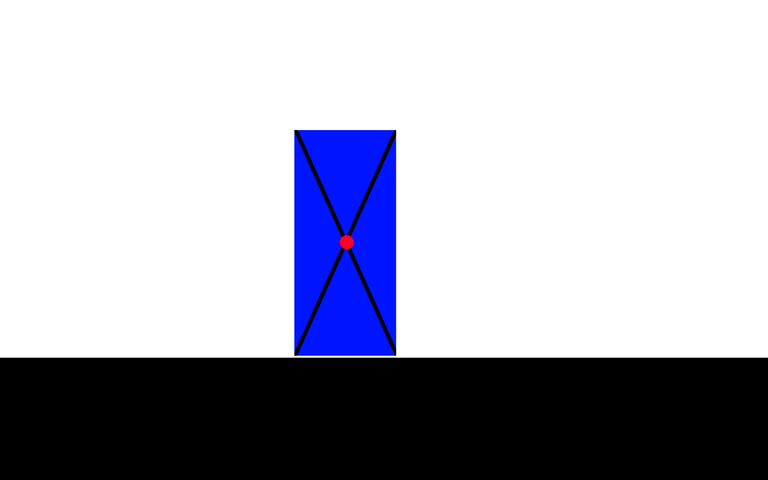
With a simple object, the center of gravity is typically the center of the item. In this case, the red dot represents the center of gravity.
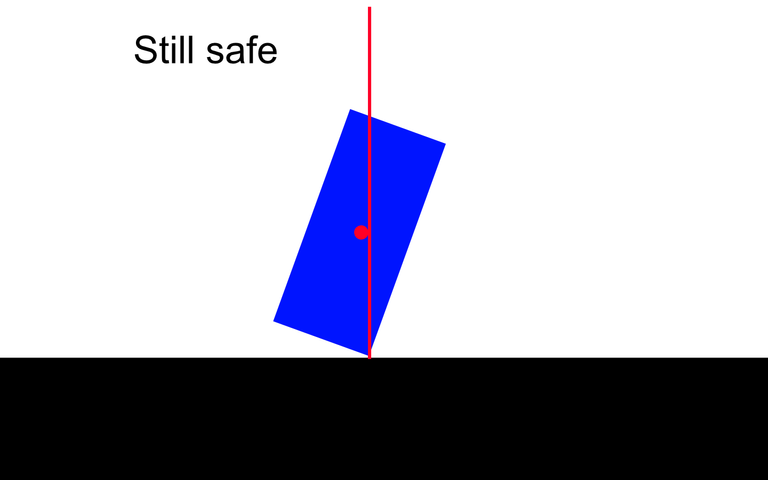
If the object is pushed, it might not fall over. If the center of gravity hasn't gone past the corner it's taking support on. As the center of gravity is still on the left side, it'll just fall back on left and return to the original state.
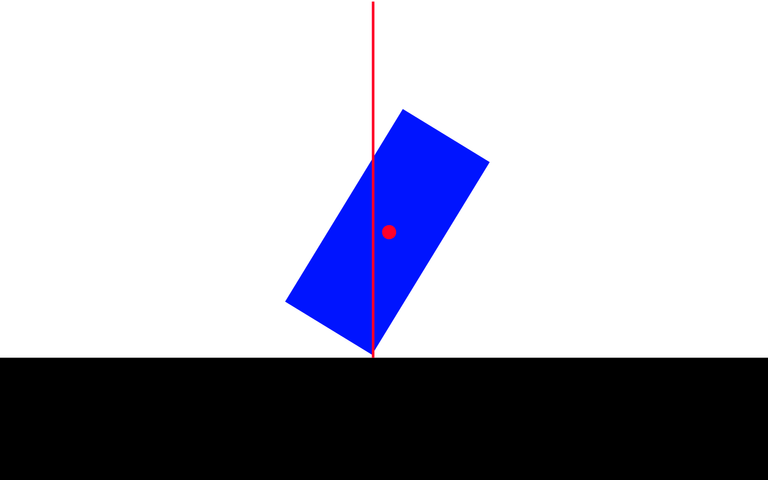
However, if the object would be pushed further and the center of gravity goes past the corner, it'll fall over to the right.
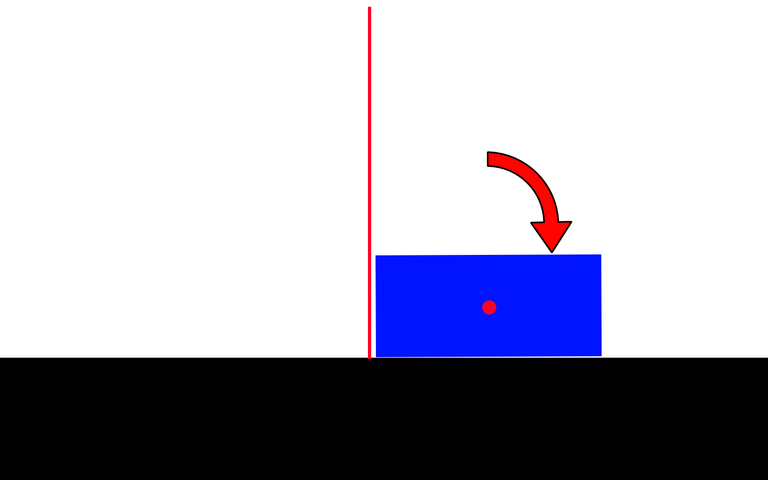
Dun-dun-duuun. In this image the red arrow worked better. The object fell down. This is the simplified way how to show when an object falls down.
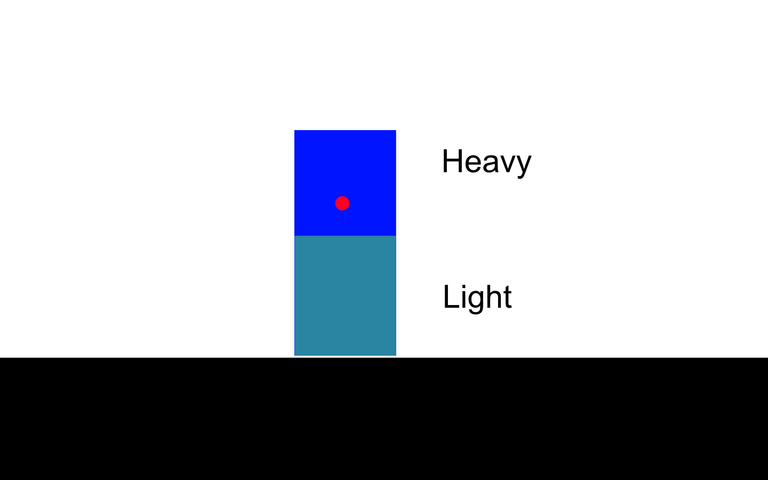
Different shapes and different compositions cause the objects to have very different centers of gravity. If the object is heavier from the upper side, the center of gravity will be much higher and it will fall down more easily.
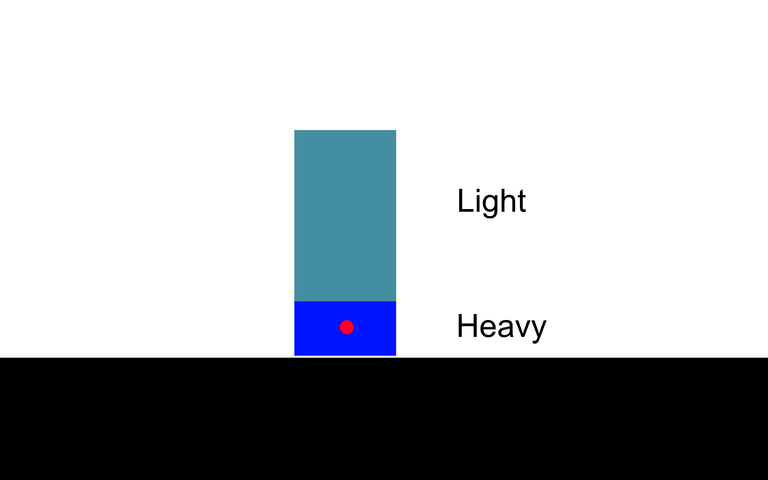
If the bottom is heavier, the center of gravity is really low. This is what we usually aim for and if you're packing boxes or something similar, it's recommended to put heavy stuff to the bottom. This will make it more stable.
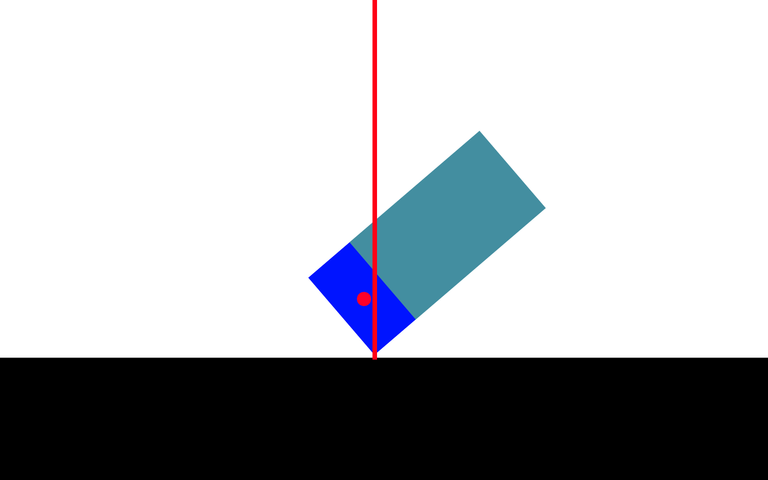
As you can see in the above simplified photo, the object with lower center of gravity wouldn't fall over even from such position. Lower center of gravity is generally the safest solution.
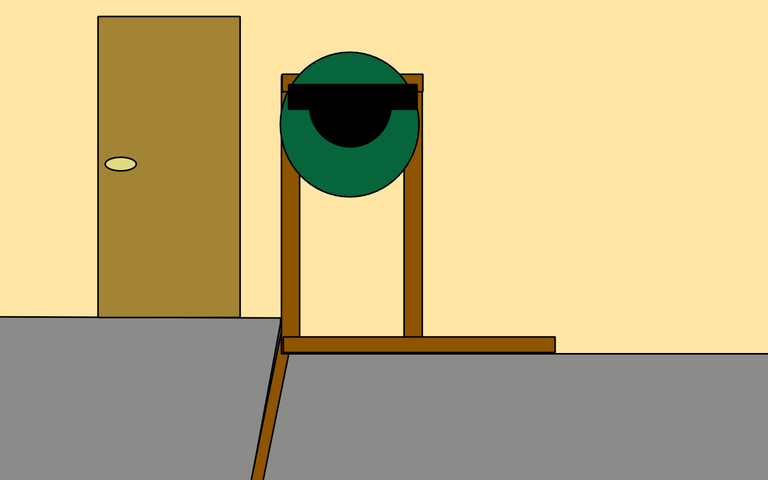
But sadly I didn't want to put the hose really low because I prefer it to be more easily accessible, I installed two supports on the both directions it could be likely to fall over. In addition to this I added a support, but I couldn't get it drawed clearly enough in this, so I left it out. Lucky for you, I took a photo:
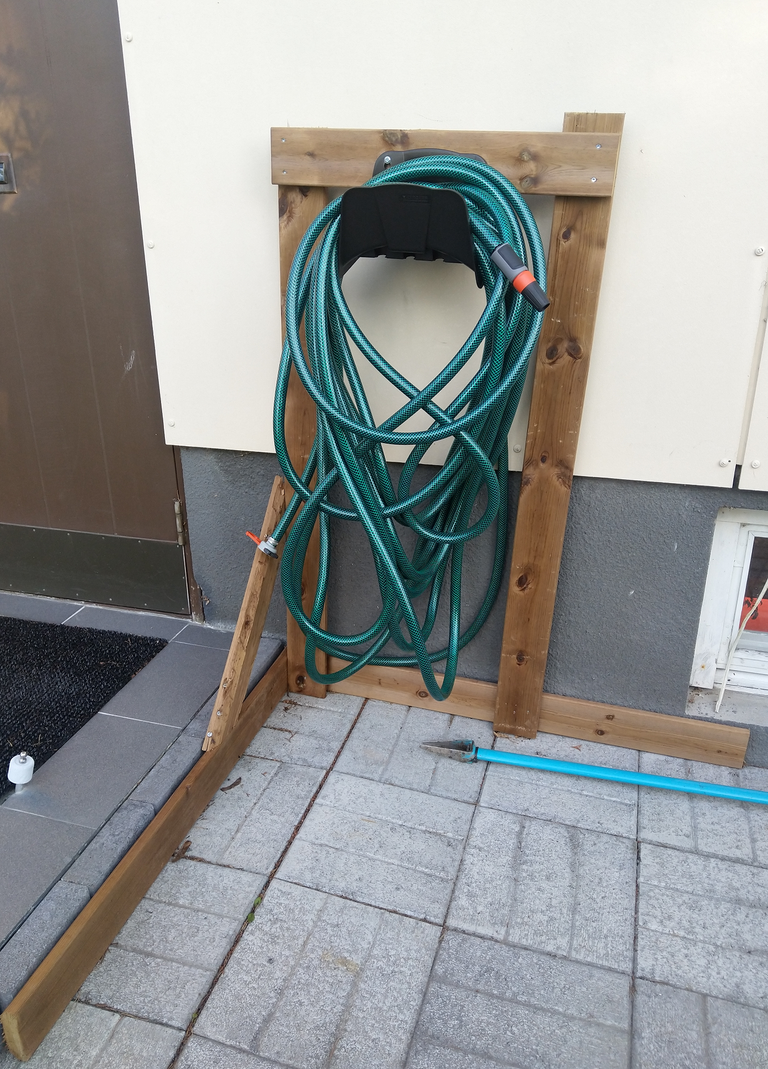
I know it isn't pretty, but it won't flip over and it's a very sturdy build. I'd be surprised if anything would bring this down.
Well done. Money saved and some earned on Steem!
Posted using Partiko iOS
Money saved and even though the construction of that itself is boring, it's an interesting lesson about the center of gravity for those who haven't heard of it in school :)
Congratulations @apsu! You have completed the following achievement on the Steem blockchain and have been rewarded with new badge(s) :
You can view your badges on your Steem Board and compare to others on the Steem Ranking
If you no longer want to receive notifications, reply to this comment with the word
STOPTo support your work, I also upvoted your post!
Vote for @Steemitboard as a witness to get one more award and increased upvotes!
@tarazkp hey I'm tagging you
tag received.
I actually found this post really informative, even if the solution is only beautiful to a Finnish engineer's eyes...
Thanks. My wife said she likes it too, but it might be because we're married. You never know and luckily I don't want to know.
I got tagged so I am voting on this.
I should tag you more often, as I've heard you only haven't been unnecessarily to get your attention. Luckily, you still haven't, as this isn't unnecessary at all.
This is in the way it was destined to be.
And almost wrote "tit was destined to be", but it's also a great expression. This is the way tit was destined to be.
You're such a nerd
I'm trying my best to be one. But it's hard when almost everyone else nerds better than I do.
This post has been voted on by the SteemSTEM curation team and voting trail. It is elligible for support from @curie.
If you appreciate the work we are doing, then consider supporting our witness stem.witness. Additional witness support to the curie witness would be appreciated as well.
For additional information please join us on the SteemSTEM discord and to get to know the rest of the community!
Please consider setting @steemstem as a beneficiary to your post to get a stronger support.
Please consider using the steemstem.io app to get a stronger support.